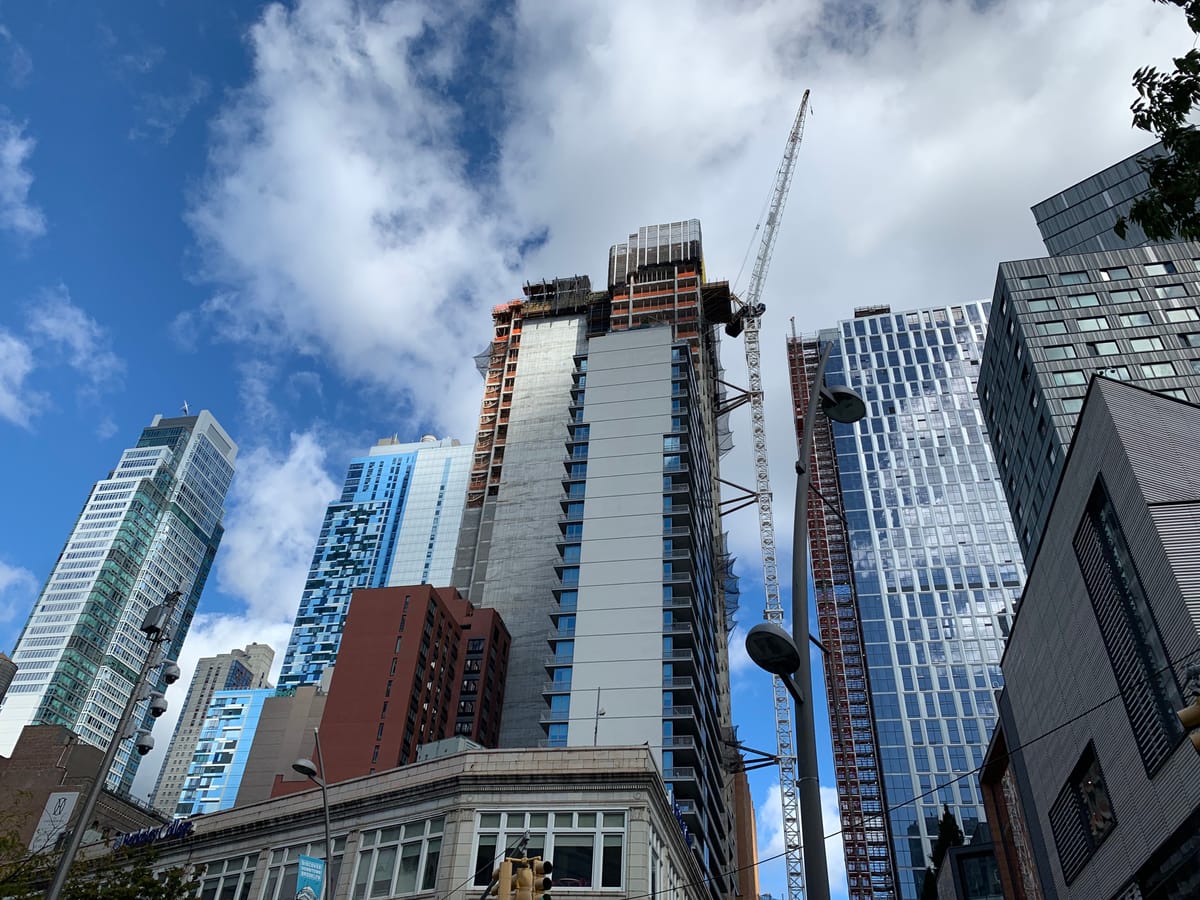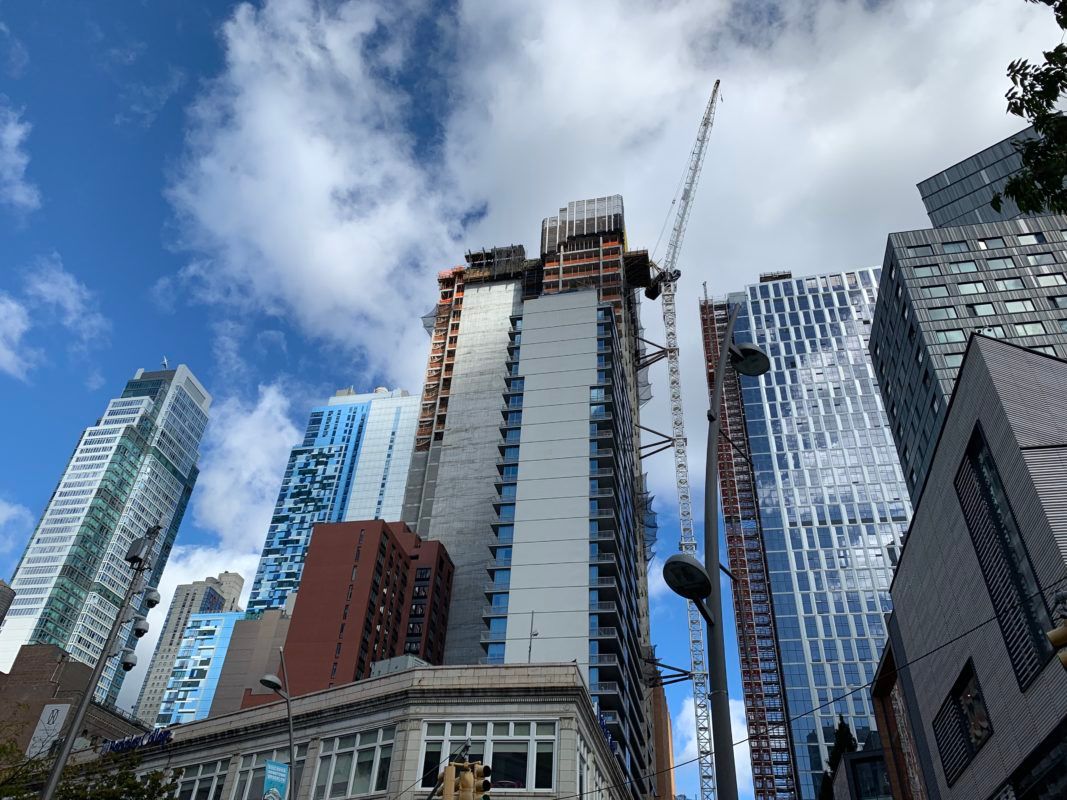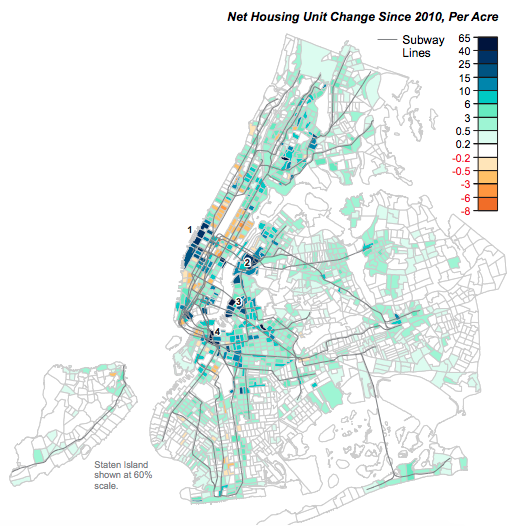Downtown Brooklyn, Williamsburg and Greenpoint Saw Borough’s Largest Housing Growth Last Decade


Sections of Downtown Brooklyn and Williamsburg-Greenpoint, where high-rise apartment buildings spurted up after city rezonings, had the most housing growth in the borough in the last decade.
They trailed only Long Island City in Queens and Manhattan’s west side, home to Hudson Yards, in new housing units per acre.
That’s according to a new analysis published by the Department of City Planning (DCP), which analyzed housing added or lost through construction, demolition, and alterations across the city. The analysis counted 1,078,670 housing units across Brooklyn in 2020, an 8% increase from ten years earlier and the highest rate of growth citywide.

Most of that growth came from two neighborhoods that were rezoned within the last 20 years to allow greater residential construction: Brooklyn Community District 1, which includes Williamsburg and Greenpoint, added just over 20,000 new units of housing in the past decade. Brooklyn Community District 2, which includes Downtown, added just under 15,000.
Citywide, New York added a total of 206,000 housing units since 2010. Downtown and Williamsburg-Greenpoint, along with LIC and Hudson Yards, accounted for about a third of that growth. The new housing was created not just through new construction, but also through alterations, often through the conversion of former offices, hotels or industrial buildings.

In lower-density neighborhoods, housing growth was much slower. In fact, some census tracts in the borough actually saw a net reduction in housing in the last decade. Pockets of Park Slope, Brooklyn Heights and Gravesend lost housing units as a result of various demolitions and conversions.
Elsewhere, wealthy pockets of Manhattan like SoHo, the West Village, and the Upper East Side saw reductions in units as owners combined multiple smaller apartments into large individual dwellings. Manhattan lost more units to alteration than the city’s other four boroughs combined.
Meanwhile, Brooklyn Community District 10, which includes Bay Ridge, Dyker Heights and Fort Hamilton, had the least housing growth of any area in the city, with only about 230 new units created.
The new numbers come as the city’s 2021 election cycle is heating up, with issues around housing affordability and development likely to play a key role. Many mayoral candidates say they plan to make affordable housing a priority if they are elected, as have a significant crop of City Council candidates.
Some candidates say they want to push for more affordable housing construction in wealthy parts of the city. In recent years, Mayor Bill de Blasio has sought to rezone neighborhoods to increase residential development, but so far, those re-zonings have happened mostly in lower-income communities like East New York and East Harlem.





